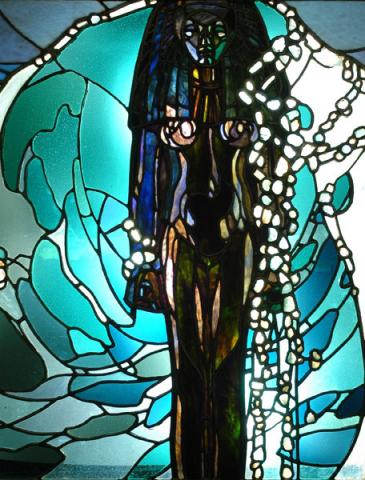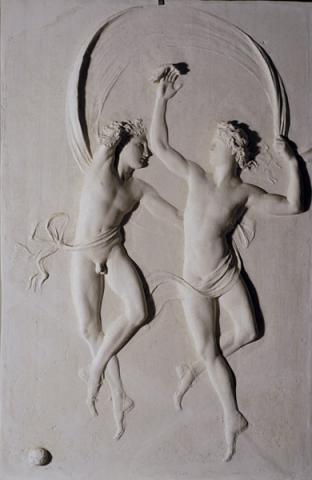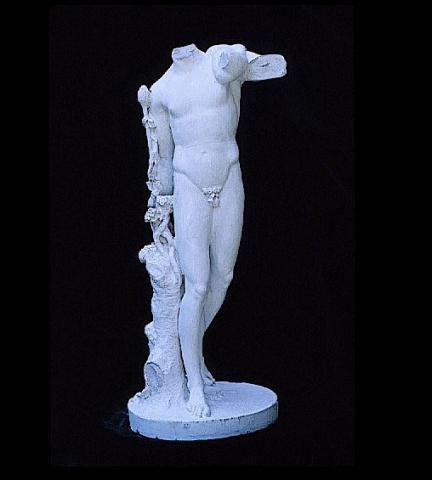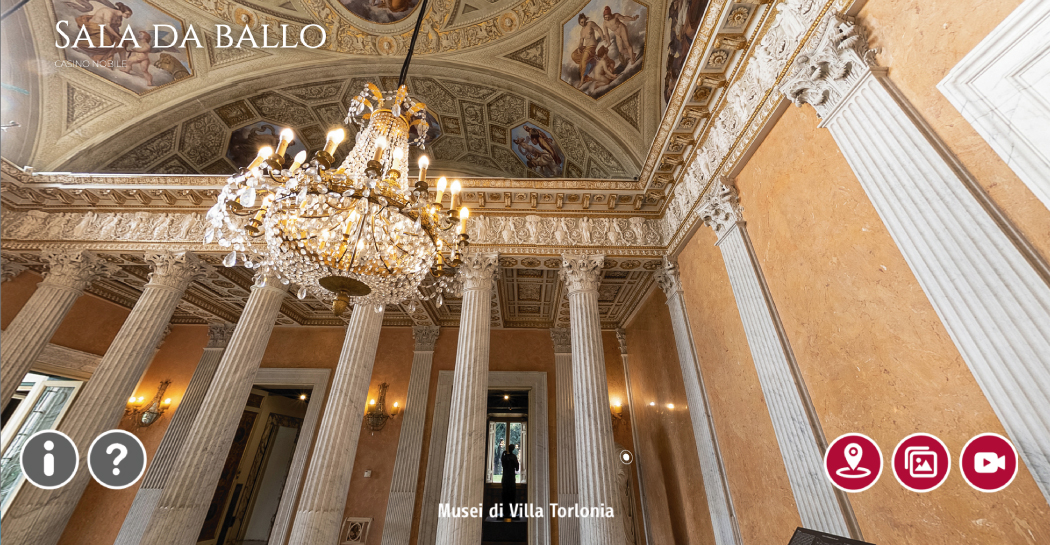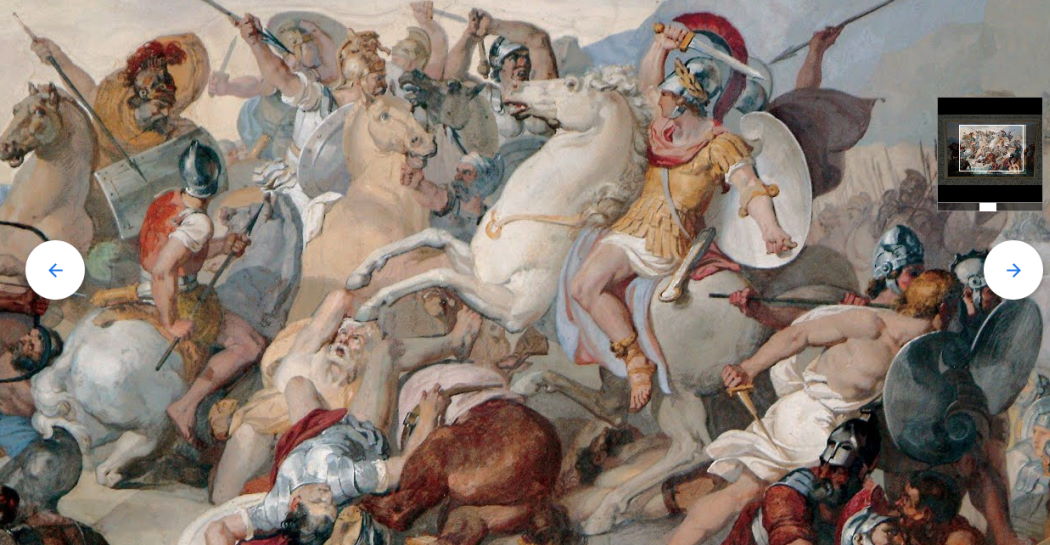Tempere della Sala delle Vedute di Napoli
Among the surviving decorations of the House, those from the “Luncheon Room”, merit a precise description and attentive analysis. Their restoration has given back body to the paintings, which were done in tempera and therefore particularly vulnerable to damage from the humidity.
The vault of the room is painted as a false sky. Originally it was painted with “the three graces”, on which Natale Carta, but these decorations were lost during the restructuring works in 1925, which created a room on the floor above.
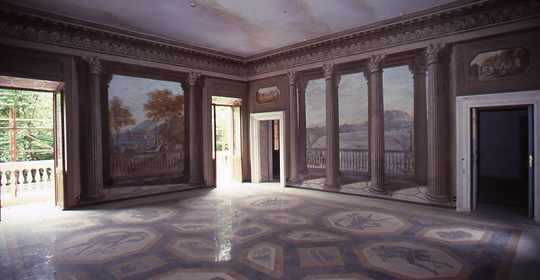
The walls were painted by Giovan Battista Caretti. They show images of the view of the Gulf of Naples, seen through a peristyle with a double row of Corinthian columns, and represented as a perspectival background, a clear reference to the art of the Renaissance.
Above the doors of the two entrances which open onto the hall, are panels showing Greeks in chiaroscuro and octagonal backgrounds with views of the main ruins of Pompeii: one shows the amphitheatre, the other the Road of the Tombs.
The first view, on the right as you come into the room, shows a view of the Gulf of Salerno, recognisable by the small look-out post, decorated by a column.
At the foot of the column a group of people appears and, next to them, two women in traditional costume.
On the opposite walls, on both sides of the door which leads outside in the direction of the Via Nomentana, two views of Naples are shown.
The first, to the right, shows the hill of Pizzofalcone with Mount Echia and the church of the Annunciation. At the foot of the hill stands the village of S. Lucia, where two fishermen are shown, intently repairing their nets and attending to their boats, as well as some stall-keepers and a child playing with a hoop and a soldier who is approaching two women.
In the foreground pieces of coloured cloth are painted, but damaged by the humidity.
The view to the left of the entrance shows the Walkway at Chiaia and revisits the numerous representations of the same scene made on horseback in the 1700s and 1800s.
The two entrance pavilions, which function as gates, are clearly visible in the scene, as is the thick foresting of the roads and the animated presence of the people shown, including several knights.
To the left as you come into the Gallery is a wide view of the gulf of Naples taken from the Marinella in the direction of S. Elmo Castle.
The scene is populated by fisherman busy working on a boat laid up on the bank, on the road several people chasing away dogs under the gaze of a woman who holds a child by the hand. On the sea sails can be glimpsed and groups of buildings are shown along the bank.
The last scene, on the walls of the entrance that meets the Gallery, is positioned centrally between the two doors surmounted by the views of Pompeii. It shows Vesuvius, seen from Posillipo, as the background to what is basically a sea-scape.
Here too various sailing boats are shown, in a much deteriorated state due to the humidity and the many years for which they were abandoned.


























